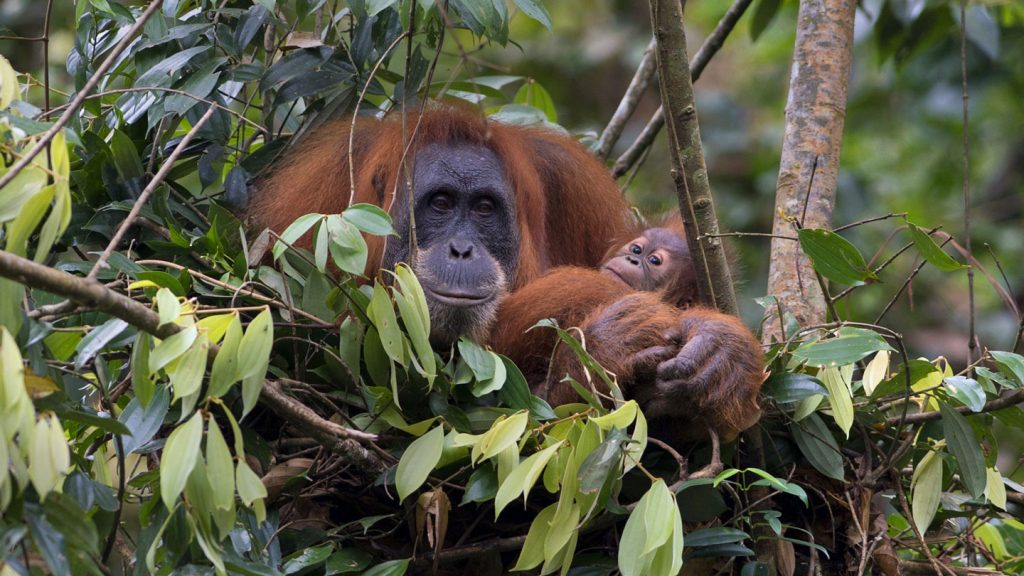Orangutans, even at just six months old, display impressive engineering skills by building complex nests high up in the tree canopy, the equivalent of four stories above the ground. The intricate nests include woven elements, pillows, blankets, and roofs for protection from the rain. Nest building is not instinctive for orangutans; it is a skill that is learned through trial and error beginning in infancy, according to a study published in Animal Behaviour.
Researchers tracked the development of 27 young Sumatran orangutans over 13 years to understand how nest building skills emerge in these primates. Baby orangutans start showing interest in nest building at 6 months of age, adding leaves and twigs to their mothers’ nests. By the time they reach around 5 years old, they can build respectable night nests a few meters above their mothers. However, they often still end up back in their mother’s nest until they are fully weaned around 7 or 8 years old.
Practice makes perfect for young orangutans as they work on perfecting their nest-building skills from ages 3 to 4, building and destroying numerous nests daily. While they are adept at creating a basic nest by the age of 5, mastering comfort features like roofs and blankets takes even more years of practice, similar to adults. This study provides the first detailed investigation into the development of nest-building skills in apes, highlighting the importance of forest schools in teaching orphaned orangutans these crucial skills.
There is a cultural element to orangutan bedtime routines, with each orangutan that includes a pillow in its nest making a special pillow-making vocalization every night. Forest schools, designed to prepare orphaned orangutans for life in the wild, may need to incorporate this cultural aspect into their curriculum along with teaching practical skills like nest building. The study reveals the fascinating process through which orangutans develop their nest-building abilities and provides insights into the importance of this skill for the critically endangered ape’s conservation efforts.


